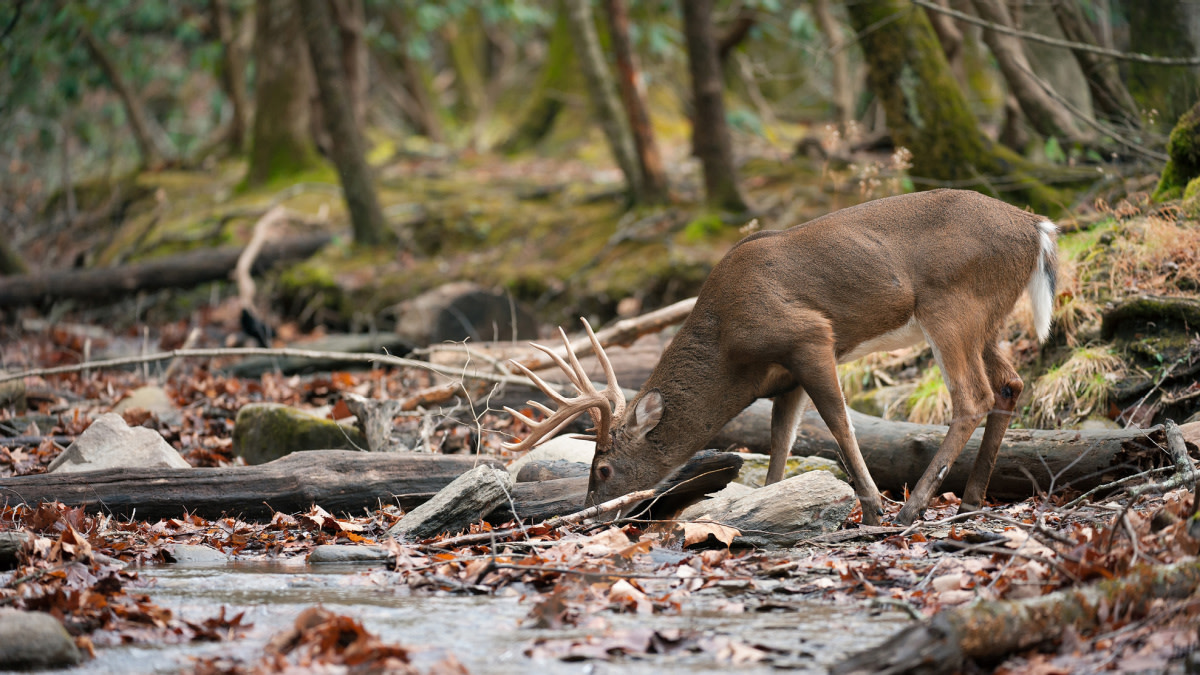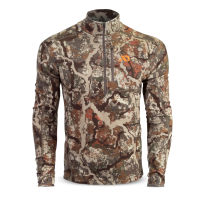
As someone who mostly hunts public land, I’ve realized that a lot of the destination food sources that factor into my hunts are on private land and off limits. Or, they are on public land but are so obvious and easy to hunt that they get a ton of pressure. Although deer still use these food sources, the better play is to kill them on the way there rather than on a field edge.
This realization led me to focus on other attractions, and while a white oak acorn drop or a loaded-up apple tree can be a huge draw, the consistency with mast just isn’t there. The same goes for browse, which is often a total crapshoot on public land. Eventually, due at least partially to my love of early-season hunting, I settled on water.
This probably isn’t revelatory to a lot of hunters because we all know deer need to drink. How much they need to drink is influenced by a litany of environmental factors as well as the size of the individual deer, but it’s safe to say any buck worthy of a taxidermy bill is going to need at least 3 or 4 quarts of water per day. Obvious as this may seem, not enough whitetail hunters focus on exploiting this weakness.
Deer seem to prefer watering in specific spots. Does it really matter why a buck loves to drink out of a small, muddy pond on a ridge versus a clear trout stream winding its way through the valley below? Yes and no.
The key to finding the right water to hunt mostly involves finding water that is located where deer want to be. The cattle pond out in the middle of a grazed-to-nothing pasture might be a watering hole for some deer, but they’ll likely use it at midnight.
A better bet is to find a water source, no matter how small or stagnant, that is located in cover. This is possible through satellite imagery. In fact, before heading to hunt any new public land, I scour onX for possible water sources as a starting point. Even tiny ponds in the woods are usually fairly visible. If the public land you’re hunting has cattle on it, you can usually zoom in and see spoked-out trails leading to the water source.
If that water source has good bedding cover nearby, or is positioned between likely food sources and likely bedding, you’re in business.
You can make an educated guess through digital scouting on what water is going to draw the most, or biggest, whitetails. But an educated guess is still a guess. Sneaking in to look at the area and take note of tracks, droppings, and buck sign is the real key to figuring out if a waterhole is worth sitting.
If the sign isn’t there, which is more common than a lot of hunters think, it’s time to move on. Just finding water in a place you want to hunt isn’t good enough. You’ve got to make sure it’s the kind of water bucks will consistently stop by in the mornings or evenings.
In some situations, which are often highly regional, this can be a zero-sum game. If the rain has been coming down consistently and the weather is cool, you might not be able to find a stock tank or pond that is worth hunting. This happens to me just about every season, and it’s just the way Mother Nature operates. Sometimes the bucks just have too many options and you’ve got to adopt a different hunting strategy.
Occasionally when this happens you can still use water to your advantage.
Finding water that whitetails drink is about as predictable as finding water whitetails cross, especially with creeks, streams, and rivers. I recently killed a buck on North Dakota public land because I patterned him crossing a river every night. While he had plenty of places to drink, he made a 500-yard beeline for the river because that’s where he wanted to go to feed. This routine ended up putting him right in my lap on the bank of the river, but it was due to the terrain instead of thirst.
When you’re around moving water, you’re usually around solid whitetail cover that is accessible in a variety of ways. Tight corridors are a goldmine for bowhunters, which is exactly what you’ll find near creeks and rivers. Get into these areas and locate beds within nasty cover and you’ll probably be in a buck’s bedroom. If you don’t want to hunt him there, there’s likely a river crossing nearby that he’ll use religiously.
So, while you might not be playing off a buck’s individual needs for H20, he still might be drawn to specific water for other reasons, which is a weakness. With either a thirsty deer or a traveler, there are opportunities to fill a tag around water.
Feature image via Matt Hansen.







Conversation